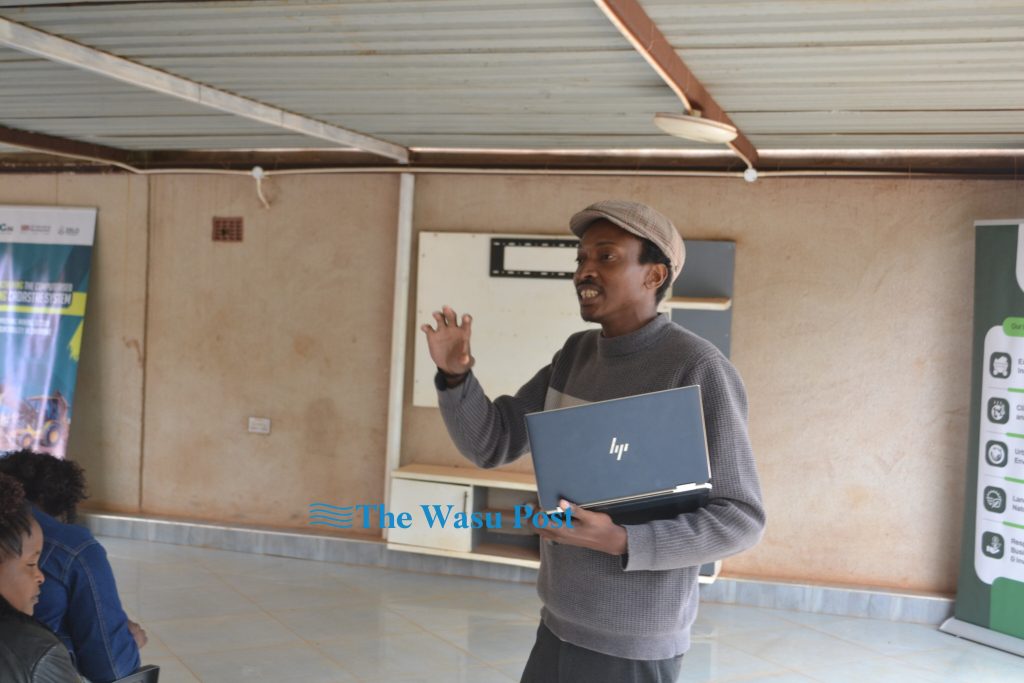By Fanuel Chinowaita

MUTARE — The Government of Zimbabwe has intensified efforts to roll out the long-awaited computerised Mining Cadastre System, a digital platform expected to improve claim registration, curb corruption, and enhance transparency in the mining sector.
The discussions, organised by Green Governance Zimbabwe (GGZ) and the Zimbabwe Environmental Law Organisation (ZELO), were held on Tuesday in Marange and Wednesday in Penhalonga.
They brought together community representatives, miners, and civil society groups to deliberate on how the new system could address long-standing challenges in claim allocation and management.
According to Brendon Chikomborero Mashipe of GGZ, the Cadastre will give everyone an equal chance to apply for and own mining claims.
However, communities in Chiyadzwa expressed mixed feelings. While they welcomed the new system, they raised concerns over retrenchments, blasting, land degradation, noise pollution, and illegal mining activities that continue to affect their livelihoods.
Local participants accused mining companies of sidelining villagers in favour of short-term contracts and external workers. “We were given short contracts, some were suddenly terminated, and now locals are restricted from working. Roads are in poor condition, deforestation is increasing, and communities are left vulnerable to drug abuse and poor health services,” participants said in Marange.
They added that poverty has deepened as sources of income were cut off, and called for the new system to be affordable and inclusive, ensuring that claims are not only allocated to the wealthy.
“Every Zimbabwean must be given a fair chance, not just the rich, because most of the people currently receiving claims are those with money,” one participant said.
Explaining the new approach in Penhalonga, ZELO lawyer Manele Mpofu said the Cadastre replaces the outdated manual registry governed by the Mines and Minerals Act of 1962, which has since been overtaken by the 2013 Constitution.
“Zimbabwe is moving from a manual to an electronic system. The Registrar of the Cadastre will be the Permanent Secretary or Deputy Permanent Secretary in the Ministry of Mines, while Provincial Mining Directors will take over roles previously held by Mining Commissioners. Once registered in the Cadastre system, the proof of title becomes conclusive,” Mpofu explained.
He added that the Cadastre will serve as the single authoritative registry for all mining titles, reduce double allocations, and capture beneficial ownership. It will also be complemented by a Mining Court to handle disputes.
The electronic platform, Mpofu said, will also introduce an online notice board, with claim applications expected to be processed within 31 days if the new legislation is approved.
For now, the government will operate dual registration, both manual and electronic, until the system is fully functional.
The youth expressed different views on the new system. A representative of the Young Miners Association said he welcomed the Cadastre, noting that their applications have not been processed since 2022 and that the digital system could level the playing field by curbing favouritism and ensuring fairer access.
“We welcome the system because currently only those with money or influence are being approved. Youths in the community are being sidelined,” he said.
However, not all small-scale miners were convinced. The Chairperson of the Young Miners Foundation, Ngonidzashe Maobvera, warned that the system could disadvantage miners who already contribute significantly to the economy.
“Mining is contributing more to Zimbabwe’s economy. From gold sales to Fidelity, we contributed 7 percent, with 75 percent of gold coming from small miners. But if Cadastre changes the pegs we already hold, what happens to the infrastructure we have built?” he asked.
Maobvera also complained about widespread rent-seeking in the sector, saying every department from police, soldiers, councillors, to ministry officials demands money from miners without considering what is left to pay workers.
Despite these concerns, documents presented at the workshops highlighted some early progress under the Cadastre. Local authorities can now verify mining claims more easily, cases of double allocations are decreasing, there is growing interest in claim registration, and small-scale miners are slowly being integrated into the digital system.
The Government has pledged to balance regulation, environmental protection, and community welfare. But unresolved issues such as retrenchments, land degradation, lack of health facilities, and poor road infrastructure continue to frustrate mining communities.
As Zimbabwe moves towards full digitalisation of mining titles, the central question remains whether the Mining Cadastre System can deliver on its promise of transparency and fairness without excluding the small-scale miners who sustain the bulk of the country’s gold production.
